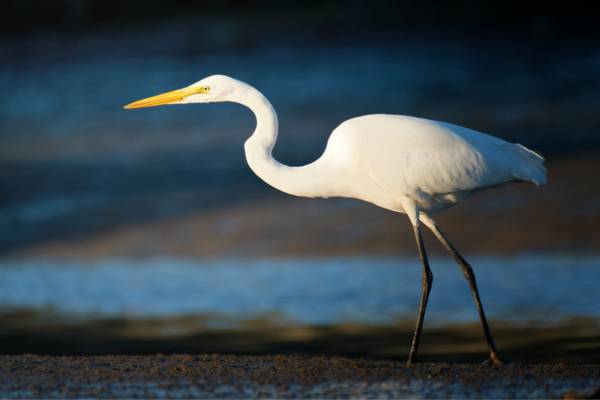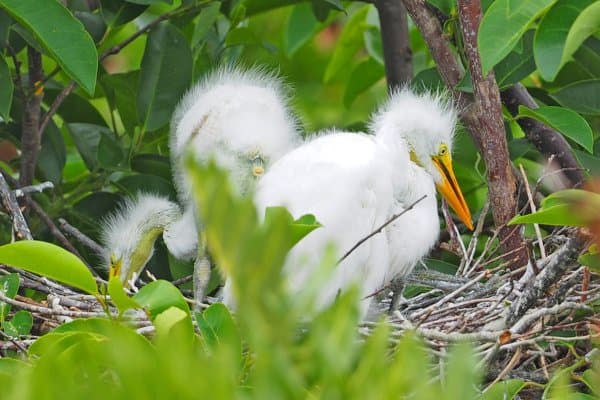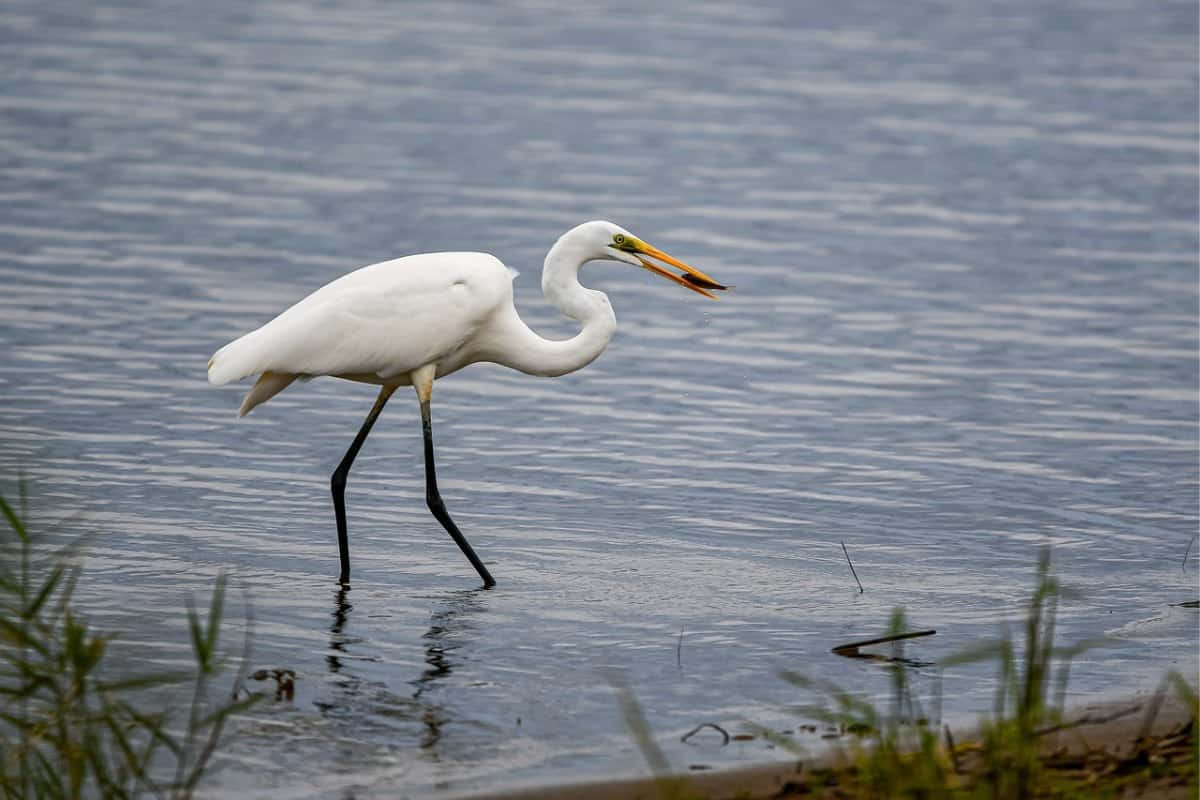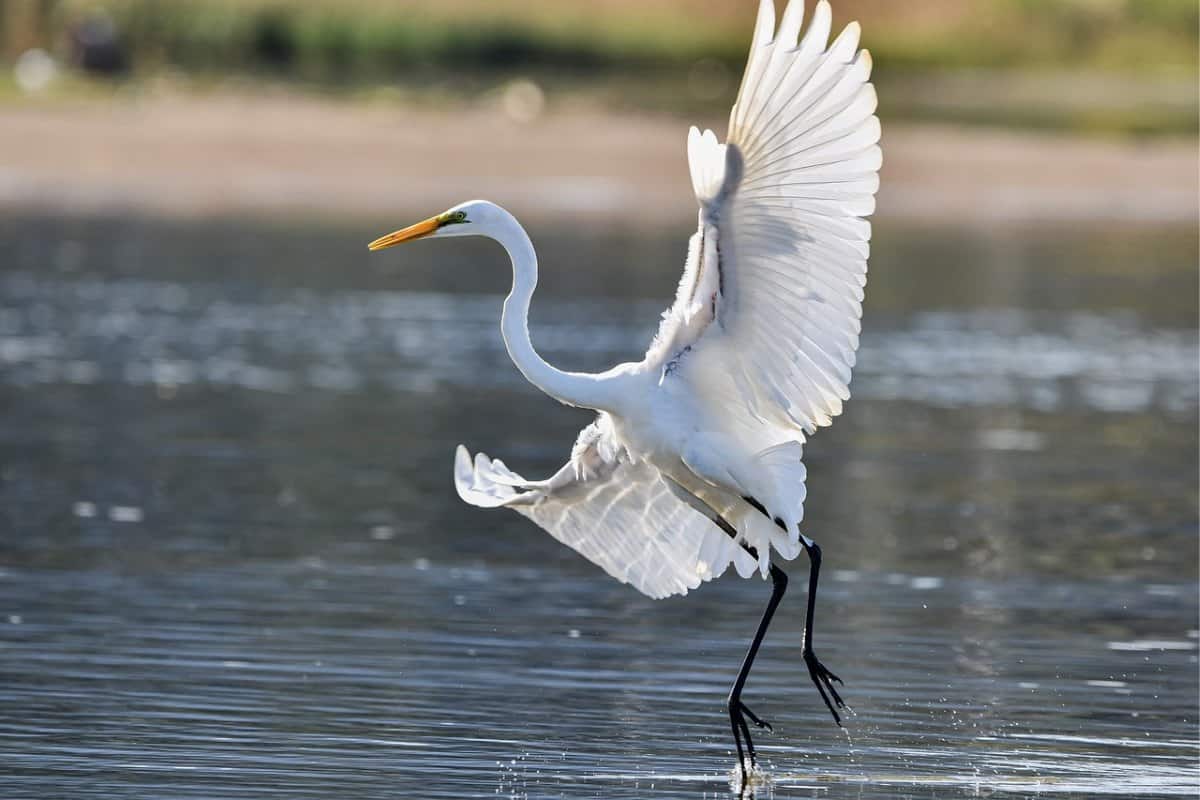Common Name: Great Egret
Scientific Name: (Ardea alba)| Size | Diet | Range in Hawaii | Status in Hawaii |
|---|---|---|---|
| 39 in. - 41 in. | small fish and amphibians to crustaceans and insects | O'ahu, Maui and Kauai | Least Concern |
The Great Egret, also known as Ardea alba, is a wading bird species that is native to much of the world, including North America, Europe, and Asia. While the species is not native to Hawaii, it has been known to make occasional appearances on the islands as a non-breeding visitor and vagrant. With its elegant appearance and graceful behavior, the Great Egret is a fascinating bird species that has captured the attention of birdwatchers and avian enthusiasts around the world.
In this article, we will explore the world of the Great Egret, its unique characteristics, and its occasional presence in Hawaii.
Great Egret
Appearance

The Great Egret stands as a striking embodiment of grace and elegance in the avian world. With its pristine white plumage that gleams like freshly fallen snow, this majestic bird commands attention wherever it goes. Its long, slender neck arches gracefully, giving it an air of regal poise.
Measuring up to an impressive 39 to 41 inches in height, the Great Egret stands tall with an awe-inspiring wingspan that can stretch between 55 to 65 inches. Its sleek body is complemented by a dagger-like bill, which it expertly wields to catch its aquatic prey. As it takes to the skies, its wings unfurl in a mesmerizing display of power and finesse.
Diet
The Great Egret is a consummate hunter, its dining habits a marvel of precision and strategy. With an appetite for aquatic delicacies, this majestic bird primarily indulges in a diet of aquatic creatures that thrive in wetland habitats.
Wading gracefully through shallow waters, the Great Egret employs its dagger-like bill as a swift and deadly instrument. Its menu is diverse, ranging from small fish and amphibians to crustaceans and insects.
Nesting

With an eye for prime real estate, the Great Egret selects nesting sites above the waterline, offering protection from potential predators. These nests are masterpieces of architectural finesse, constructed from twigs, branches, and reeds woven together to create a sturdy platform. The male and female partners collaborate on nest-building, strengthening their bond through this shared endeavor.
Once the nest is complete, the Great Egret’s attention turns to nurturing the next generation. Amidst the rustling reeds, eggs are laid, hatching into downy chicks that rely on parental care for survival. The parents take turns incubating the eggs and foraging for food, showcasing their commitment to raising a healthy brood.
Behavior
Wading through shallow waters with unhurried steps, the Great Egret is a master of stillness. With an uncanny ability to stand motionless for extended periods, it employs this stealthy strategy to wait for the perfect moment to strike. Its keen eyes remain fixed on the water’s surface, tracking ripples and movement beneath.
When the time is right, the Great Egret lunges forward with astonishing speed, its long neck extending like a lightning bolt as it captures its aquatic prey with unerring accuracy. Its dagger-like bill is both a weapon and a tool, adeptly securing foods that make up its diet.
In the breeding season, the Great Egret’s behavior takes on a more social tone. Displaying intricate courtship rituals, the birds engage in graceful dances and feather displays to attract potential mates. Once paired, their collaborative efforts extend to nest-building and the shared responsibility of raising their downy chicks.
Habitat

The Great Egret finds solace in wetland sanctuaries, where serene waters and reedy havens become its realm. With a graceful presence, it navigates freshwater lakes, rivers, and coastal estuaries, adeptly wading for prey. These habitats not only sustain its elegant hunting but also set the stage for captivating behaviors, from patient stillness to intricate courtship displays.
Range
The Great Egret spreads its wings across the Hawaiian Islands as a non-breeding visitor and occasional vagrant. In Hawaii, their presence has been noted in various locations, including Moanalua Kalihi Flats on O’ahu, Ki’i Unit of JCNWR on O’ahu, Kealia Pond NWR on Maui, Kilauea Point on Kauai, and Huleia and Hanalei NWRs on Kaua’i.
Conservation Status
The Great Egret (Ardea alba) enjoys a favorable conservation status, as assessed by the International Union for Conservation of Nature (IUCN). Currently listed as a species of “Least Concern,” the Great Egret’s global population appears stable, benefiting from protective measures and habitat preservation efforts.
Interesting Facts
1. Hunting techniques
Besides standing still and waiting for prey, Great Egrets also use other hunting techniques. They might shuffle their feet to disturb fish or use their wings to create shade, reducing glare on the water’s surface and making it easier to spot fish.
2. Conservation success
The Great Egret’s population has rebounded since the decline caused by plume hunting. Legal protection and conservation efforts have played a significant role in their recovery.
3. Relationship with other species
In some regions, Great Egrets have been observed engaging in mutualistic relationships with other animals. For instance, they may follow grazing livestock to catch insects stirred up by the animals’ movement.
4. Cultural significance
Great Egrets have held cultural significance in various societies. For example, they are often associated with purity, grace, and calmness in Chinese and Japanese cultures.
5. Distinctive eyes
Great Egrets have distinctive bright yellow eyes that contrast with their white plumage. This feature becomes particularly striking when they are in breeding plumage, adding to their overall majestic appearance.
Frequently Asked Questions
1. How do Great Egrets interact with other bird species in their habitat?
Great Egrets may interact with other bird species in mixed foraging flocks, especially when food sources are abundant. However, they usually maintain their personal space while hunting.
2. How do Great Egrets interact with humans?
Great Egrets are generally tolerant of human presence, especially in protected areas like wildlife refuges. However, disturbances such as getting too close to nesting sites can negatively impact their breeding success.
3. Can Great Egrets swim?
While they are primarily wading birds, Great Egrets are capable of swimming if needed, using a combination of their feet and wings for propulsion.
4. How long do Great Egrets live?
Great Egrets can live up to 15 to 20 years in the wild.
5. How do Great Egrets cool themselves in hot weather?
Great Egrets have specialized adaptations to regulate their body temperature. They can raise their feathers to allow air circulation, which helps them cool down in hot weather.




